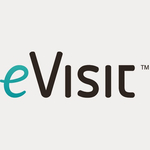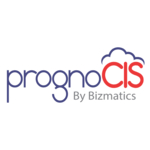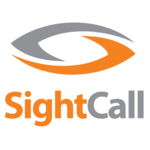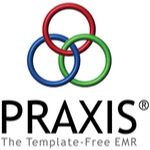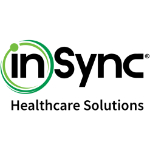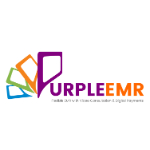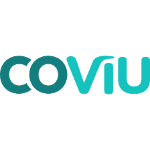TechnologyCounter provides genuine, unbiased real user reviews to help buyers make informed decisions. We may earn a referral fee when you purchase through our links, at no extra cost to you.
List of 15 Best Telemedicine Software
Showing 1 - 15 of 32 productsAdvancedMD is a intuitive and innovative software solution tailored for healthcare professionals. With its user-friendly interface features, AdvancedMD streamlines administrative tasks, enhances patient care, and improves overall practice efficiency...Read AdvancedMD Reviews
eVisit is a software that offers virtual healthcare solutions to patients, making it easier than ever to connect with healthcare providers from the comfort of their own homes. With a user-friendly interface and secure communication tools, eVisit is c...Read eVisit Reviews
VSee is a video-conferencing platform that simplifies and enhances virtual communication. With its easy-to-use interface, high-quality audio and video features, and seamless integration with multiple devices, VSee takes online meetings to a whole new...Read VSee Reviews
Doxy.me is a telemedicine platform designed to connect patients and healthcare providers anytime, anywhere. The user-friendly interface technology allow for seamless virtual consultations, making healthcare more convenient and accessible for all. Wit...Read Doxy.me Reviews
Kareo is a and innovative healthcare technology company that offers a wide range of solutions for healthcare providers. With its user-friendly software and customizable features, Kareo aims to simplify and streamline daily tasks, improve patient care...Read Kareo Reviews
PrognoCIS EMR PrognoCIS EMR is a electronic medical records software designed to streamline and optimize healthcare practices. With its user-friendly interface features, PrognoCIS EMR provides healthcare professionals with a comprehensive is a soluti...Read PrognoCIS EMR Reviews
Sightcall is a solution for seamless and real-time communication. With its advanced technology and user-friendly interface, connecting with remote teams, clients, and customers has never been easier. Unleash the power of virtual collaboration with Si...Read Sightcall Reviews
Fruit Street is a software that aims to transform your wellness journey. With its user-friendly interface technology, Fruit Street offers an unparalleled experience in managing your health. Say goodbye to the hassle of traditional methods and join th...Read Fruit Street Reviews
MegaMeeting, is a solution for virtual communication and collaboration. With its intuitive interface and powerful features, MegaMeeting makes online meetings, webinars, and conferences smooth is a . Stay connected with your team, clients, and partner...Read MegaMeeting Reviews
Halemind, the innovative software designed to enhance your mind and optimize your performance. With its advanced features and user-friendly interface, Halemind is a tool for boosting your cognitive abilities and achieving your goals. Say hello to a s...Read Halemind Reviews
Praxis EMR is a leading electronic medical record software designed to simplify and streamline healthcare workflows. With its user-friendly interface features, Praxis EMR allows doctors and medical professionals to efficiently manage and organize pat...Read Praxis EMR Reviews
InSync EMR is a leading electronic medical records software designed to streamline and optimize the patient care process. With user-friendly features and a highly secure platform, InSync EMR helps healthcare providers effectively manage patient infor...Read InSync EMR Reviews
PurpleEMR is a and innovative software designed for healthcare professionals. It streamlines the management of electronic medical records, making it easier and more efficient for healthcare providers to access and organize vital patient information...Read PurpleEMR Reviews
DigiQure is a software designed to streamline and simplify healthcare services for both patients and providers. With its user-friendly interface features, DigiQure aims to transform the way healthcare is accessed and delivered, ensuring a seamless an...Read DigiQure Reviews
Coviu is a virtual meeting platform that connects people in real-time, no matter where they are in the world. With its dynamic features and user-friendly interface, Coviu allows for seamless communication and collaboration between individuals and tea...Read Coviu Reviews
- What Is Telemedicine Software?
- Top Reasons Why Businesses Need Telemedicine Software?
- What Are the Top Key Features of Telemedicine Software?
- What Are the Top Benefits of Telemedicine Software?
- What Are the Steps to Choose the Right Telemedicine Software?
- What Are the Types of Telemedicine Software for Different Industries?
- What Are the Technology Trends for Best Telemedicine Software?
- What Are the Deployment Options for Telemedicine Software?
What Is Telemedicine Software?
Telemedicine refers to the method of delivering medical care from a distance, utilizing technological means such as video conferencing, telephone communication, or messaging platforms. The provision of healthcare services at one's own residence obviates the need for individuals to commute to a medical facility, hence facilitating accessibility to such services.
The best telemedicine software refers to a specific category of software designed to enhance the exchange of information and engagement between healthcare practitioners and individuals seeking medical care remotely.
Typically, telehealth software system encompasses characteristics such as the utilization of online patient portals, the implementation of secure messaging systems, and the incorporation of video conferencing capabilities. Moreover, this software possesses the capability to collect, retain, and retrieve patient information, alongside executing diagnostic and prescription tasks.
Telemedicine software solutions program has the potential to provide advantages to individuals who encounter limited access to medical facilities in their locality or have challenges in mobility owing to disabilities or illnesses
Additionally, it has the potential to decrease waiting periods by eliminating the necessity of physically visiting a medical institution and waiting for a physician's availability. Furthermore, the inclusion of diagnostic and prescription elements facilitates the prompt administration of appropriate therapies or medications to patients by healthcare professionals.
In general, the best telehealth software represents a significant software solution that facilitates enhanced healthcare accessibility, expedited diagnostic processes, and streamlined treatment strategies for individuals lacking alternative avenues. The aforementioned technology possesses significant efficacy in facilitating equitable access to healthcare services, irrespective of geographical location.
Top Reasons Why Businesses Need Telemedicine Software?
1. Improve patient access to healthcare: The best telemedicine software enhances patient healthcare accessibility by facilitating prompt access to medical professionals regardless of geographical location.
2. Enhance patient experience: The integration of private text messaging, secure video conferencing, and digital health records has the potential to enhance the overall patient experience.
3. Reduce spending costs: The utilization of telehealth software systems has the potential to mitigate the financial burdens typically associated with conventional healthcare environments, including expenses related to patient travel and physician consultation fees.
4. Improve diagnosis quality: The utilization of telemedicine software solutions has the potential to enhance the quality of diagnoses by granting medical practitioners immediate access to clinical data and medical records.
5. Increase patient engagement: The utilization of telemedicine software has the potential to enhance patient participation by facilitating patient education and enabling convenient access to healthcare services.
6. Enable multi-location care: The utilization of telemedicine software facilitates the provision of healthcare services by healthcare professionals to patients across various geographical regions.
7. Enable remote monitoring of patients: The best telehealth software enables healthcare providers to remotely monitor the health of patients and deliver timely interventions in situations where a patient's health is at risk.
8. Provide access to healthcare resources: The best telehealth software facilitates the utilization of healthcare resources, including medical specialists and clinical studies.
9. Connect patients with medical experts: Telemedicine software facilitates the connection between patients and medical professionals situated in distant geographical regions.
10. Improve appointment scheduling: The utilization of telehealth software systems facilitates telemedicine software providers in enhancing the precision of appointment scheduling.
11. Offer streamlined communication: Telemedicine software facilitates efficient communication between telemedicine software providers and patients.
12. Reduce hospital readmissions: The utilization of telemedicine software solutions enables healthcare practitioners to deliver prompt interventions and mitigate instances of hospital readmissions.
13. Improve local service delivery: The best telemedicine software facilitates the enhancement of local service provision in geographically isolated regions by healthcare experts.
14. Increase patient satisfaction: The implementation of telehealth software systems has been found to enhance patient satisfaction by facilitating expedited access to healthcare services and resources.
15. Mitigate risks in the healthcare system: The utilization of the best telehealth software serves to alleviate the potential hazards involved with the provision of healthcare services.
What Are the Top Key Features of Telemedicine Software?
1. Online video consultation: Telemedicine software offers a secure and real-time video consultation service to facilitate communication between patients and clinicians.
2. Secure sharing and storage of patient data: The utilization of telehealth software systems facilitates the establishment of a safe and confidential platform that enables the storage and dissemination of medical records exclusively to authorized individuals.
3. Automated appointment scheduling: This functionality enables patients to conveniently schedule appointments through internet platforms, unrestricted by time constraints.
4. E-prescriptions: The best telehealth software facilitates the secure electronic transmission of prescriptions by physicians, eliminating the need for conventional paperwork.
5. Secure communication: The best telemedicine software facilitates private and encrypted text as well as video chat contact between telemedicine software solutions providers and individuals seeking medical care.
6. Remote monitoring: Telemedicine software facilitates the ability of medical practitioners to remotely observe and record patient vital signs and other health-related information in a synchronous manner.
7. Clinical decision support: This feature offers clinicians the opportunity to utilize sophisticated clinical decision support tools, which can assist in making informed decisions on diagnosis and treatment.
8. Mobile access: Contemporary telemedicine software solutions offer patients the convenience of accessing medical services through any internet-connected device, hence enhancing accessibility to care.
What Are the Top Benefits of Telemedicine Software?
1. Increased convenience: The utilization of telemedicine software solutions facilitates the provision of patient consultations in a virtual manner, hence enhancing the convenience for those who may have challenges in accessing healthcare services.
2. Improved patient care: Top telemedicine software enables healthcare providers to deliver expedited and precise diagnoses and treatment plans within the confines of the patient's residence, hence enhancing convenience and accessibility. Additionally, this mitigates the necessity for in-person appointments.
3. Accessible care: The utilization of telemedicine eradicates geographical limitations, so enabling individuals to receive medical services from nearly any location throughout the globe. This provides access to remote and underprivileged communities.
4. Cost savings: The utilization of the best telemedicine software for the purpose of conducting virtual appointments offers a reduction in expenses related to travel and other financial burdens typically connected with conventional healthcare visits.
5. Time savings: The utilization of telehealth software systems has been found to exhibit more efficiency compared to in-person visits, benefiting both healthcare providers and patients.
6. Reduce wait times: In the majority of instances, telemedicine sessions can be scheduled in a manner that optimizes time management, so mitigating the stress associated with waiting rooms and minimizing costs.
7. Lower risk of infection: The best telemedicine software significantly mitigates the possible hazards associated with the transmission of infectious diseases via interpersonal interaction with other patients.
8. Enhanced communication: The best telehealth software enhanced communication between healthcare providers and patients, hence fostering the delivery of superior quality healthcare services.
What Are the Steps to Choose the Right Telemedicine Software?
1. Identify your telemedicine needs: When picking appropriate telemedicine software, it is important to take into account the size of your practice, the existing telemedicine services in place, and the demographics of your patient population. Additionally, it is crucial to evaluate the technological infrastructure and bandwidth of your healthcare facility, as these factors can significantly influence the overall quality of a patient's telemedicine encounter.
2. Evaluate features and functionality: Telehealth software systems is imperative to ensure that the chosen software possesses the requisite telemedicine functionalities, including but not limited to scheduling capabilities, video streaming capabilities, text chatting capabilities, and secure messaging capabilities. It is important to take into account the security and privacy features of the platform.
3. Consider the software’s ease of use: The usability and comprehensibility of top telemedicine software should be optimized for both patients and providers. This encompasses the ease of arranging appointments, the user-friendliness of the platform interface, and the availability of patient medical records.
4. Research available integrations: Certain telemedicine platforms include the capacity to seamlessly interact with electronic health records (EHRs) and practice management systems. Conduct an assessment to determine the essential integrations required for your professional activity.
5. Request a demo: After the process of narrowing down the available telemedicine software possibilities, it is advisable to request a demonstration of the chosen platform in order to ascertain its compatibility with the specific requirements of your practice. One should evaluate the adequacy of video streaming quality, the clarity of audio output, and the availability of training and support services, if required.
6. Select the software and implementation plan: Prior to selecting a telemedicine platform, it is advisable to develop an implementation plan encompassing a projected schedule and a budgetary framework. It is imperative to ensure that the entire team is in agreement with the proposed strategy, particularly in relation to the adoption of the plan by both patients and providers. Develop a systematic mechanism for monitoring outcomes and implementing modifications as necessary.
What Are the Types of Telemedicine Software for Different Industries?
The variability of telemedicine software across businesses is contingent upon the specific characteristics and offerings of each respective industry. Nevertheless, it is worth noting that there exist certain prevalent categories of software that find application across several industries.
These categories include:
1. Electronic Health Records (EHR) systems: These systems are responsible for the storage and management of sensitive health information pertaining to individuals, encompassing their medical history, as well as details regarding treatments and procedures.
2. Scheduling and appointment management software: The utilization of this software facilitates the scheduling of appointments and the effective management of patient flow inside clinics.
3. Telemedicine platforms: These software solutions facilitate virtual interactions between healthcare providers and patients through video or audio calls, enabling the delivery of diagnostic and treatment remotely.
4. Practice Management software: This software application facilitates the management of several operational aspects within clinics, encompassing employee data, billing procedures, and inventory control.
5. Medical Imaging software: The program facilitates the examination of patient tests and imaging investigations, encompassing X-rays, MRI scans, CT scans, and ultrasounds, by healthcare providers.
6. Laboratory software: This particular program facilitates the ability of healthcare providers to request and monitor laboratory tests, as well as analyze and interpret the resulting data.
7. Telemonitoring software: This program enables healthcare personnel to remotely monitor and track patient data. The aforementioned data can then be utilized for the purpose of identifying patterns and enabling providers to intervene if deemed essential.
8. Wearable Devices: These gadgets possess the capability to monitor many health factors, including heart rate, blood pressure, and body temperature. Subsequently, they are able to transfer the collected data to healthcare providers for the purpose of evaluation.
What Are the Technology Trends for Best Telemedicine Software?
In recent years, there has been a significant emphasis on telemedicine among healthcare professionals, with a corresponding increase in the significance of the software that drives it.
To optimize the telemedicine encounter for both patients and physicians, healthcare practitioners should be mindful of the following essential technologies embedded in the software they select:
1. Cloud-based Video Conferencing: This technological advancement enables healthcare professionals to engage in remote communication with their patients, eliminating the need for physical proximity. Generally, the telephone conversation is devoid of cost or incurs minimal expenses, and does not necessitate the use of any specific apparatus.
2. Remote Monitoring and Follow-up Care: The best telehealth software equipped with remote monitoring capabilities enables physicians to remotely monitor a patient's health status, eliminating the need for in-person consultations. Patients are provided with reminders to adhere to their drug regimen, respond to inquiries, or monitor their physiological measurements.
3. Artificial Intelligence: By harnessing artificial intelligence (AI), telemedicine software has gained the ability to analyze medical records and offer significant patient metrics. Furthermore, telemedicine has the potential to aid in the diagnosis of many diseases, offer ongoing care, and assess patients' adherence to treatment protocols.
4. Robust Security: The implementation of a secure telemedicine platform is imperative due to the very sensitive nature of healthcare data. The platform ought to possess encryption features that adhere to security requirements, such as HIPAA, and should have multi-factor authentication.
5. Flexible Pricing: The telehealth software systems have to possess the capability to accept diverse payment structures, including pay-per-use or subscription-based approaches. This affords healthcare providers the opportunity to select the pricing structure that most effectively aligns with their requirements. In general, the optimal top telemedicine software should facilitate a seamless connection between patients and healthcare practitioners.
The top telemedicine software should facilitate secure and efficient communication between the two entities. Through the utilization of suitable technology, telemedicine software solutions has the capacity to offer a healthcare experience that is both cost-effective and easy, while ensuring the security of patient information.
What Are the Deployment Options for Telemedicine Software?
There are four primary methods for deploying telemedicine software:
1. On-Premise: This entails the deployment of the program on computer systems situated in a specific physical setting, such as a medical practitioner's office or clinic. One advantage of on-premise deployment is the provider's ability to exercise control over access and retain comprehensive oversight of security measures and patient data.
2. Cloud-hosted: This entails deploying the software on cloud infrastructure, hence enabling remote access over an internet connection. One advantage of cloud-hosted deployment is that it allows the telemedicine software solutions provider to utilize a safe and cost-effective hosting solution that can be easily scaled as needed.
3. Hybrid: This approach entails integrating the aforementioned alternatives, allowing service providers to leverage both local and cloud environments. One advantage of hybrid deployment lies in its capacity to offer greater flexibility compared to either on-premise or cloud-hosted alternatives in isolation.
4. Mobile: This entails the utilization of software on portable devices, such as smartphones or tablets. One advantage of mobile deployment is the enhanced ability for physicians to efficiently and conveniently deliver telemedicine services to their patients.
In summary, the primary deployment alternatives for telemedicine software solutions encompass on-premise, cloud-hosted, hybrid, and mobile choices. Each of these strategies possesses distinct advantages and disadvantages, and the optimal choice is contingent upon the requirements and preferences of the provider.

